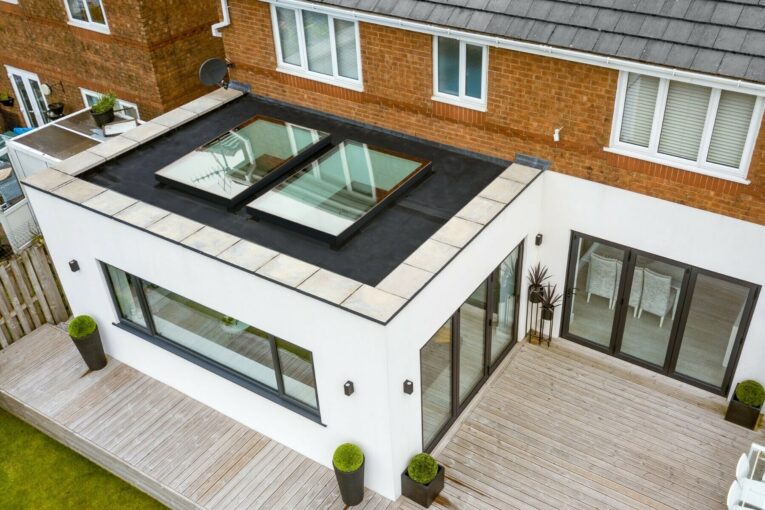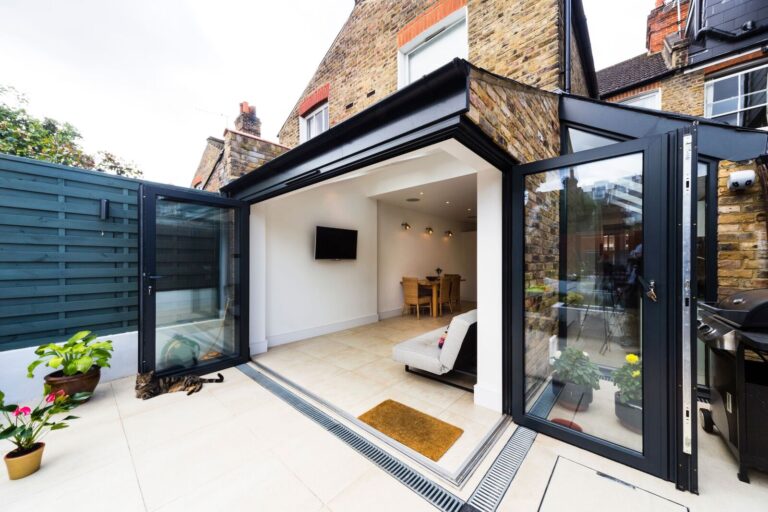Transforming your home and making it better and more spacious is going to bring more harmony, joy, and happiness to your life. However, this process can be quite challenging if you are not sure what you’re getting yourself into, and if you don’t make the right plans.
Collaborating with the right services, creating a budget, and following a plan are a few of the things that are going to make your project much better and easier. If you have been thinking about a home transformation, you’ve come to the right place.
Use this guide to learn more about home extensions, how to plan the budgets, and much more that is going to help create the best experience you can have.
Table of Contents
Start by deciding what your vision is
Embarking on a house extension is akin to starting a new chapter in the story of your home. It’s an opportunity to reshape the narrative, to create spaces that reflect evolving needs and desires. Before plunging into the construction phase, it’s essential to clearly visualize what you aim to achieve.
Whether it’s accommodating a growing family, carving out a home office, or designing that sunlit breakfast nook you’ve always dreamt about, the purpose will dictate the design. Engage with architects or home design software, and immerse yourself in inspiration boards.
The clearer your vision, the smoother the transition from dream to reality. Remember, an extension isn’t merely about adding square footage; it’s about enhancing the quality and functionality of your living space.
Ensure that you have all the permits before you start the journey

Any significant home modification often comes wrapped in red tape. Before setting the foundation stone, you need to be well-versed in local zoning laws, building codes, and potential homeowner association restrictions. These legal parameters might influence aspects like the extension’s height, proximity to the boundary, or even its visual aesthetic.
It’s advisable to consult with a local authority or a planning consultant to ensure that all designs are within legal confines. Acquiring the necessary permits can be time-consuming, so factor this into your project timeline.
By being proactive and well-informed, you mitigate the risk of costly legal complications and potential redesigns down the line.
Collaborate with the right services
A house extension isn’t a solo endeavor. It’s a symphony orchestrated by various professionals, each playing a pivotal role. Your choice of architect, contractor, and even suppliers can profoundly influence the project’s success. Seek recommendations, scrutinize portfolios, and conduct thorough interviews.
Ensure that they not only understand your vision but are also transparent about costs, timelines, and potential challenges. It’s also beneficial to have a clear communication channel, setting regular check-ins and updates.
A harmonious homeowner-professional relationship is fundamental for a project of this magnitude. If you are unsure of where to start or how to even find the right service for the job, you can check out https://www.judgesbuildingservices.uk/.
Make sure you have realistic views on how much this is going to cost

One of the most formidable challenges homeowners face is staying within budget. At the outset, itemize every potential cost – from raw materials to labor charges. Seek multiple quotations, understanding that the cheapest might not necessarily be the best in terms of quality.
Additionally, incorporate a contingency fund, typically 10-20% of your total budget. This safety net will cover unforeseen expenses, which are almost inevitable in large-scale projects. Regularly review your expenditure, adjusting as necessary.
Remember, while it’s tempting to opt for cost-saving shortcuts, compromising on quality can lead to higher maintenance costs in the long run.
Understand the balance between things looking pretty and being functional
A house extension should seamlessly blend with the existing structure, maintaining architectural harmony. But, while aesthetics are crucial, functionality must not take a back seat.
Consider aspects like natural lighting, ventilation, insulation, and energy efficiency. For instance, large windows might offer scenic views but could also lead to increased heating or cooling costs.
Every design decision should strike a balance between visual appeal and practical utility. As the homeowner, you’ll be inhabiting these spaces daily, so ensure they cater to your lifestyle and comfort.
Be flexible and realistic when it comes to deadlines and timelines
In the realm of home extensions, timelines are more like shifting sands than concrete paths. While it’s essential to have a structured schedule, remember that this journey is peppered with unpredictability. Weather disturbances, material delays, unexpected site challenges, or even changes in your design preferences can push the deadlines.
It’s not just about setting a start and an end date; it’s about effectively managing the period in between. Weekly or bi-weekly reviews can offer clarity on progress and potential bottlenecks.
Cultivate a sense of flexibility. The more adaptable you are to evolving situations, the less stressful the experience will be. Moreover, ensure regular communication with your team, so everyone is aligned with changes and expectations.
Make sure you consider the long-term impact of the decisions you make

The contemporary homeowner is increasingly eco-conscious, not just for altruistic environmental reasons but also for the long-term cost benefits. When extending your home, it’s an opportune moment to integrate green solutions.
Whether it’s sourcing sustainable materials, installing solar panels, or implementing rainwater harvesting systems, these elements can significantly reduce your home’s carbon footprint and future utility bills. Beyond the immediate project, think of the legacy this extension will have.
Opting for timeless designs over fleeting trends, or investing in quality over quick fixes, ensures that the extension adds enduring value to your home, both in terms of functionality and market worth.
Implement and utilize modern technology to get the best out of this experience
As we transcend deeper into the digital age, our homes aren’t far behind. Smart home systems, automated lighting, advanced security setups, and energy-efficient appliances are redefining modern living. When planning your extension, consider the technological enhancements that can be embedded.
Perhaps it’s an integrated speaker system in your new entertainment room or a smart thermostat that adjusts room temperatures based on occupancy.
These might seem like luxury additions, but in the grand scheme, they elevate the living experience remarkably. Technology should not be an afterthought but an integral component of your extension blueprint.
Conclusion

House extensions are transformative, not just in terms of spatial dynamics but also in the enhanced lifestyle they promise. They offer a canvas to reimagine and recreate, turning existing spaces into dream abodes.
Extensions are more than mere constructions; they are articulations of aspirations, embodiments of dreams, and reflections of growth. Embrace the journey, and you’ll find the destination even more rewarding.

